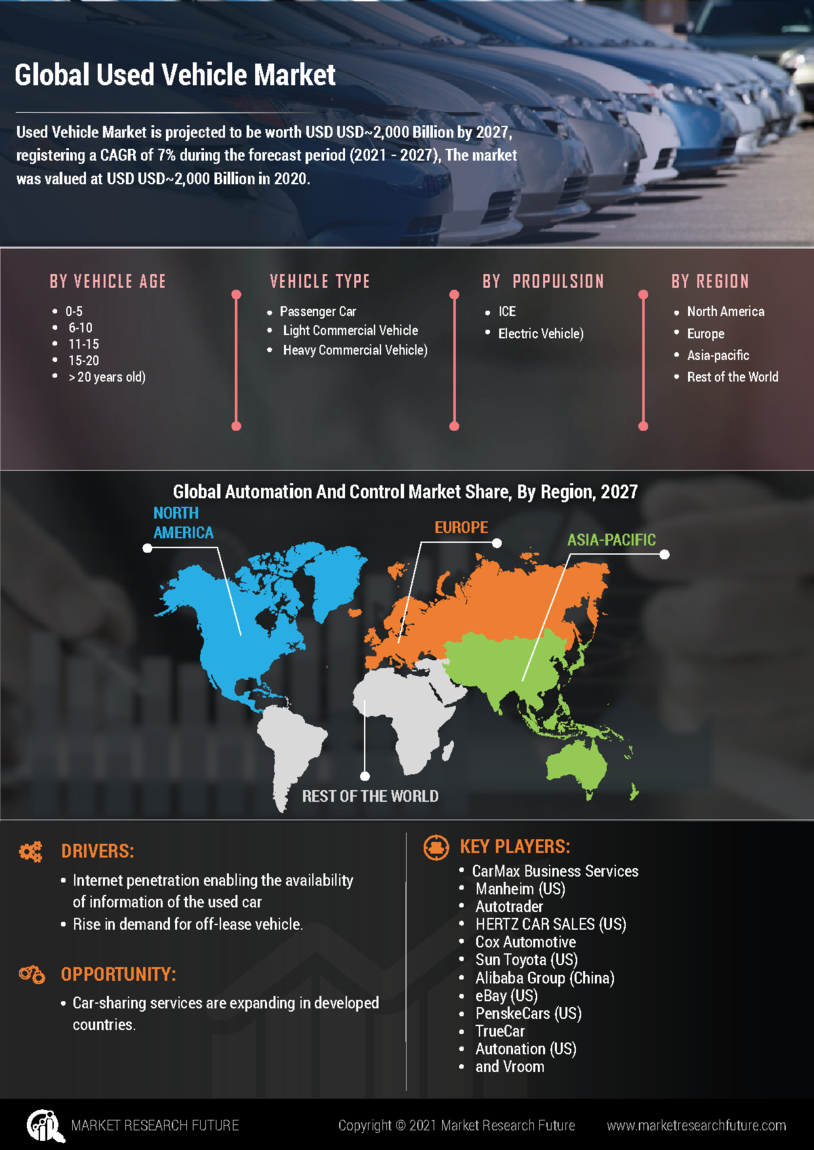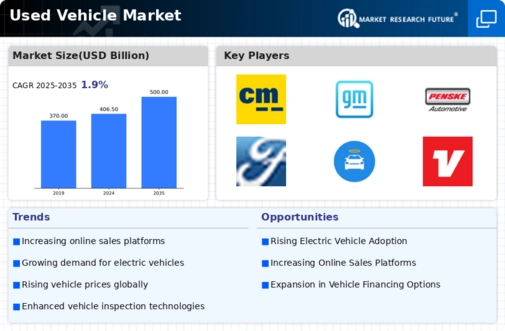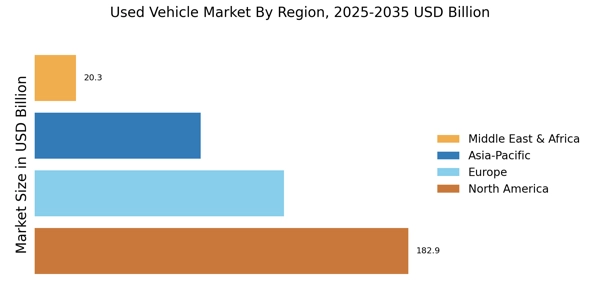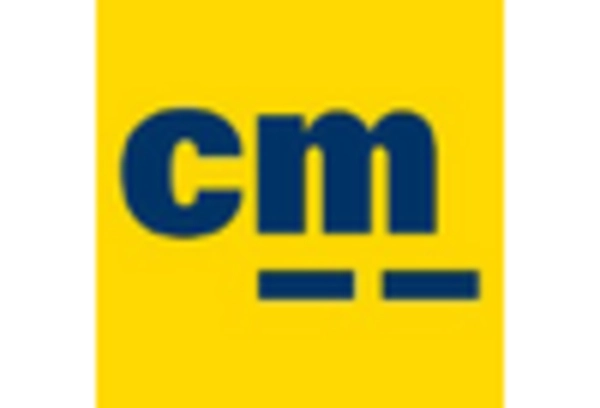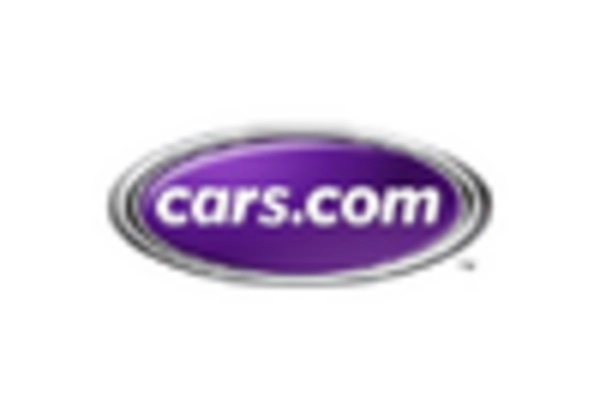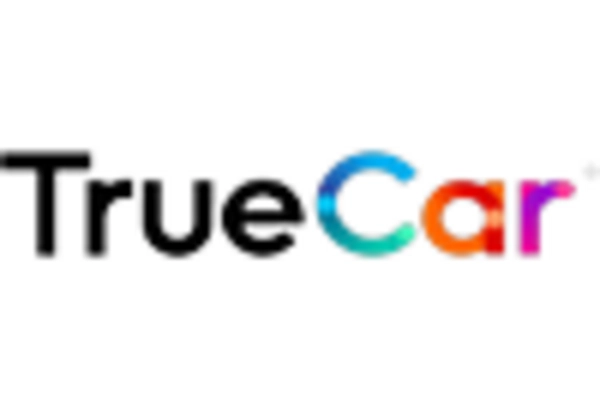Shift in Consumer Preferences
Consumer preferences are evolving, which seems to be influencing the dynamics of the Used Vehicle Market. There is a noticeable shift towards practicality and value, with many buyers prioritizing reliability and cost-effectiveness over brand new models. This trend is particularly evident among younger consumers who are increasingly inclined to purchase used vehicles as their first cars. Market data suggests that nearly 40% of first-time buyers opt for used vehicles, indicating a strong inclination towards this segment. Additionally, the rise of social media and online platforms has facilitated the sharing of information regarding the benefits of used vehicles, further driving interest. As consumers become more informed, their willingness to consider pre-owned options is likely to bolster the Used Vehicle Market in the coming years.
Expansion of Online Marketplaces
The expansion of online marketplaces is transforming the landscape of the Used Vehicle Market. With the rise of e-commerce, consumers are increasingly turning to online platforms to buy and sell used vehicles. This shift not only enhances convenience but also broadens the selection available to buyers. Market data shows that online sales of used vehicles have surged, with many consumers preferring the transparency and ease of browsing from home. Additionally, online platforms often provide detailed vehicle histories and customer reviews, which can instill confidence in potential buyers. As technology continues to advance, the role of online marketplaces in facilitating transactions is likely to grow, further driving the Used Vehicle Market.
Increased Affordability of Used Vehicles
The affordability of used vehicles appears to be a primary driver in the Used Vehicle Market. As new vehicle prices continue to rise, consumers increasingly turn to the used vehicle segment for cost-effective alternatives. Data indicates that the average price of a used vehicle has seen a modest increase, yet remains significantly lower than that of new vehicles. This price disparity encourages budget-conscious buyers to explore pre-owned options, thereby expanding the customer base within the Used Vehicle Market. Furthermore, financing options for used vehicles have become more accessible, allowing a broader demographic to participate in the market. This trend suggests that as economic conditions fluctuate, the demand for used vehicles may continue to grow, reinforcing the industry's resilience and adaptability.
Sustainability and Environmental Concerns
Sustainability and environmental concerns are becoming increasingly relevant in the Used Vehicle Market. As awareness of climate change and environmental degradation grows, consumers are more inclined to consider the environmental impact of their purchases. Used vehicles generally have a lower carbon footprint compared to new vehicles, as the production of new cars involves significant resource consumption and emissions. This shift in consumer mindset may lead to a greater acceptance of used vehicles as a sustainable choice. Moreover, the market for certified pre-owned vehicles is expanding, as manufacturers and dealers promote the environmental benefits of reusing existing vehicles. This trend suggests that sustainability could play a pivotal role in shaping consumer behavior and preferences within the Used Vehicle Market.
Technological Advancements in Used Vehicles
Technological advancements in used vehicles are likely to be a significant driver in the Used Vehicle Market. As manufacturers integrate advanced technologies into their vehicles, even older models are becoming equipped with features such as enhanced safety systems, infotainment options, and fuel efficiency improvements. This integration of technology into the used vehicle segment makes these cars more appealing to consumers who seek modern conveniences without the new vehicle price tag. Data indicates that vehicles equipped with advanced safety features tend to retain their value better, which may encourage buyers to consider used options. As technology continues to evolve, the availability of well-equipped used vehicles could further stimulate demand in the Used Vehicle Market.
